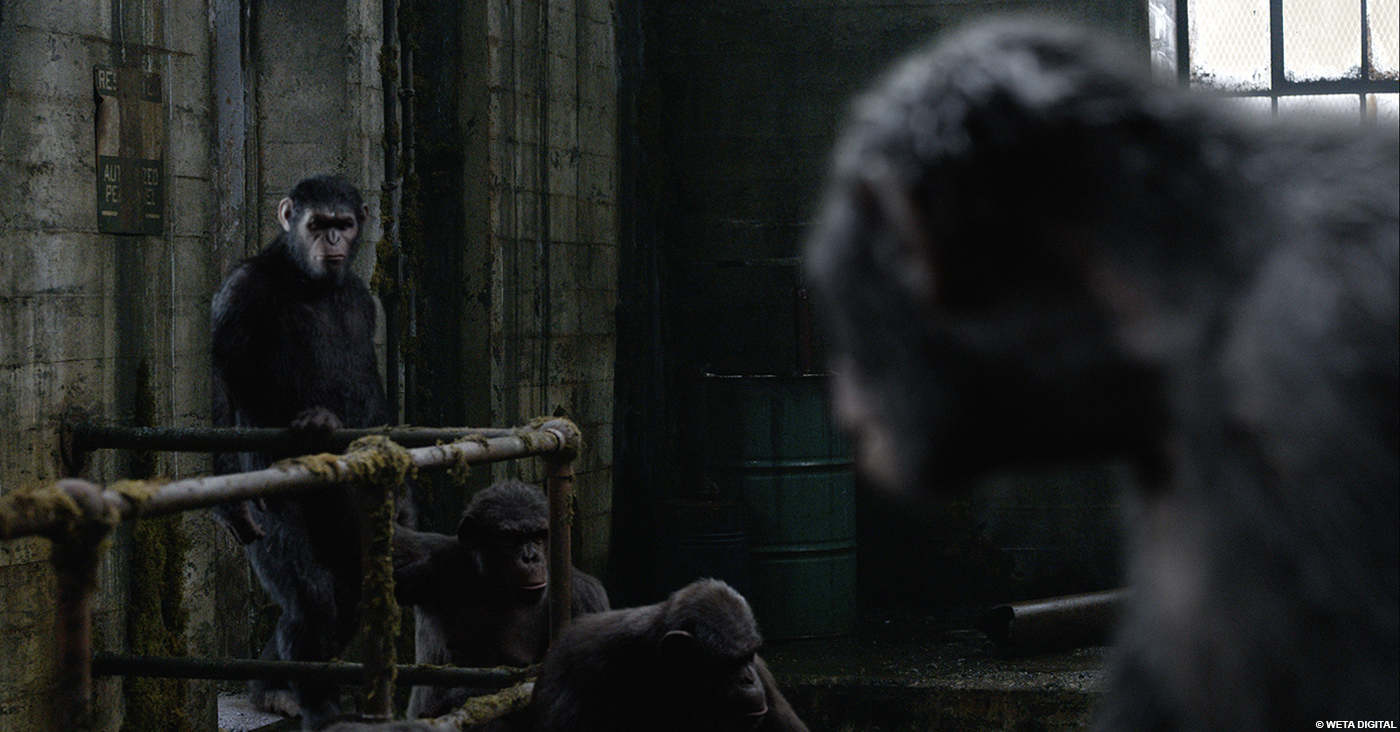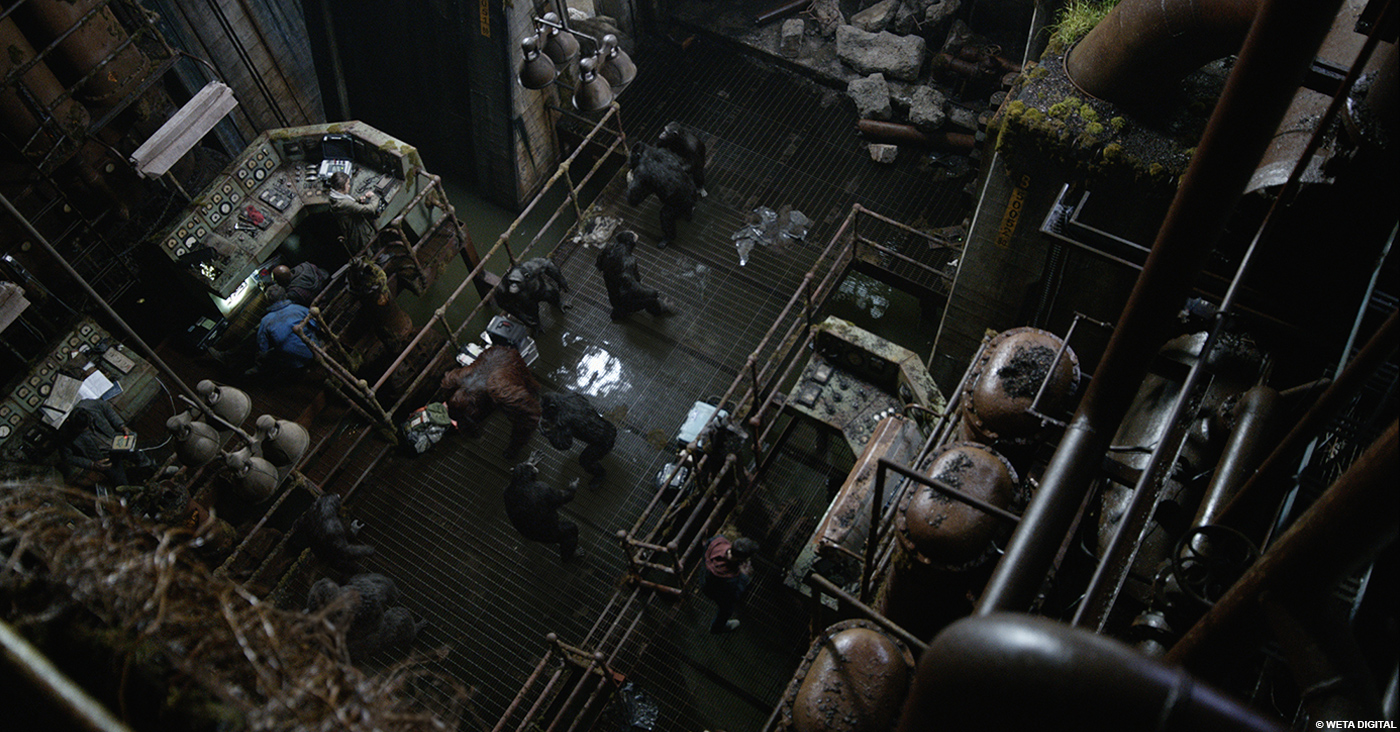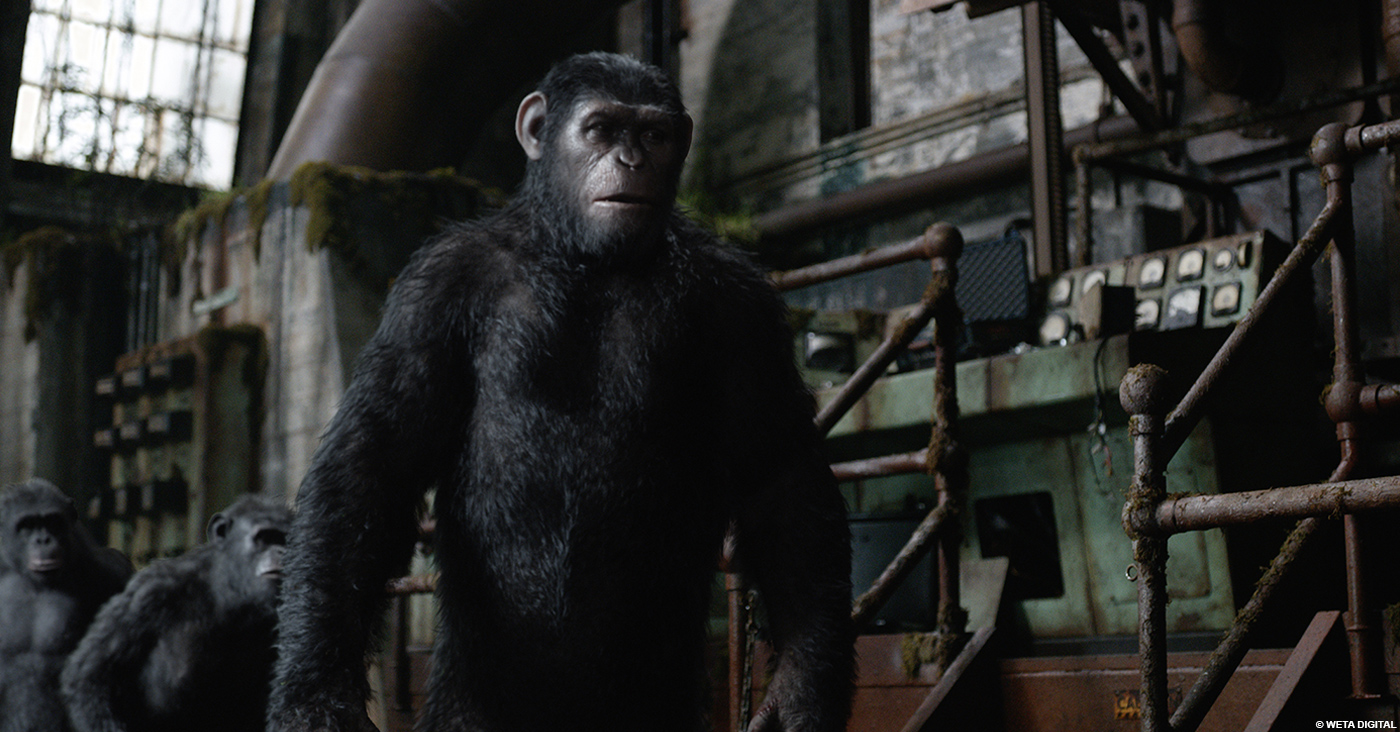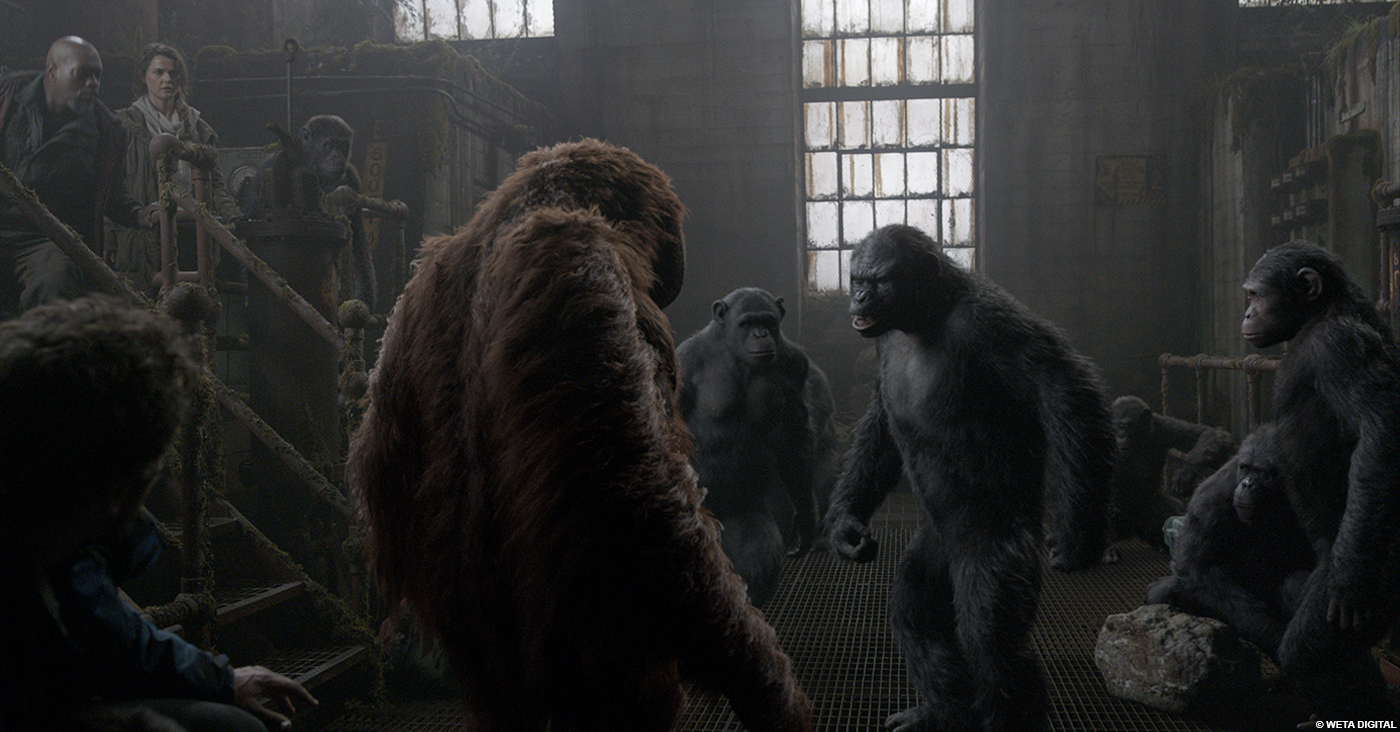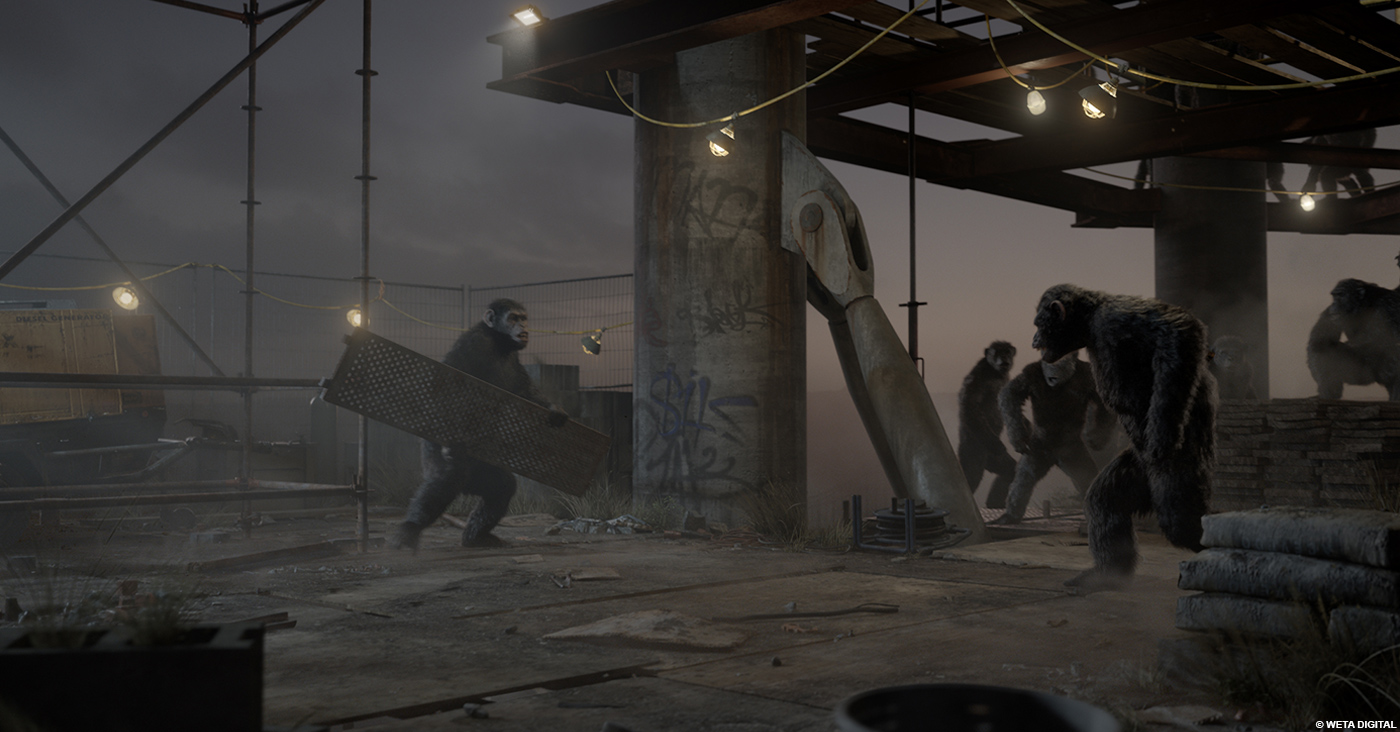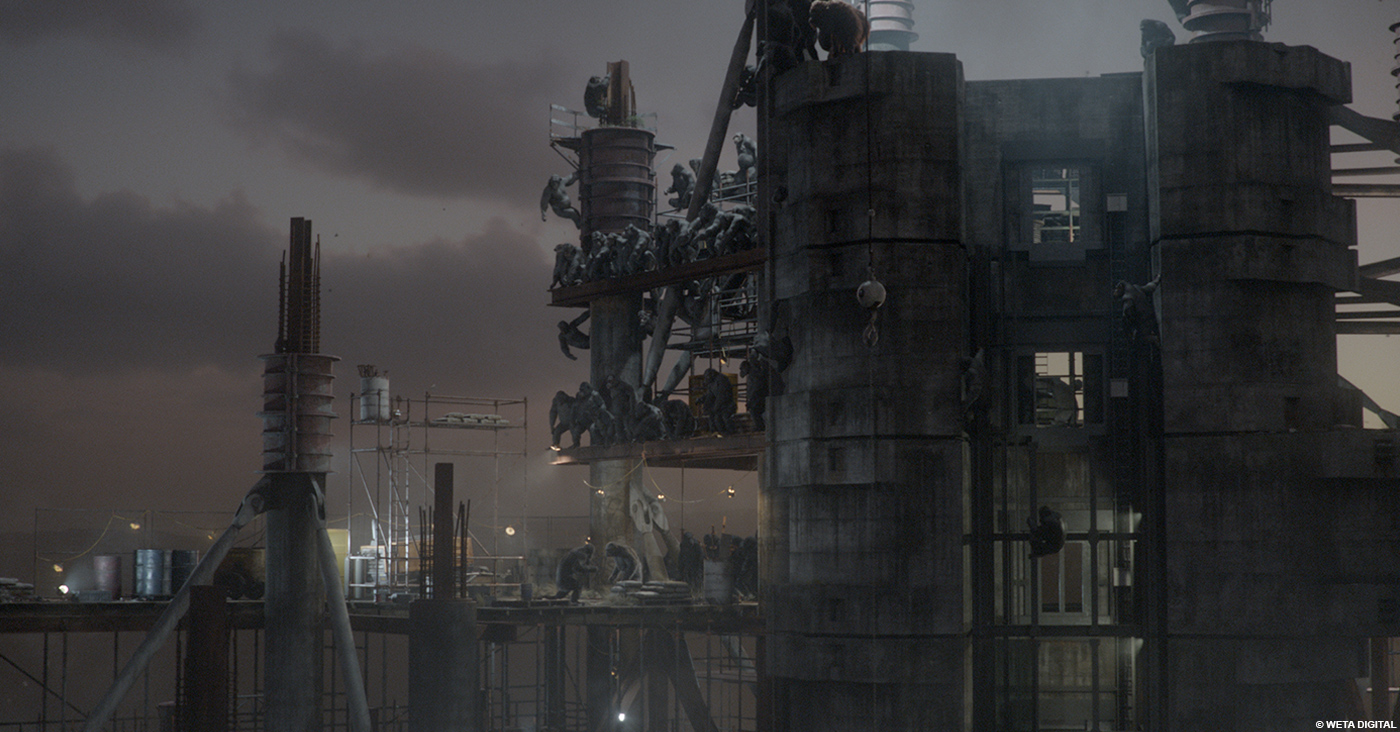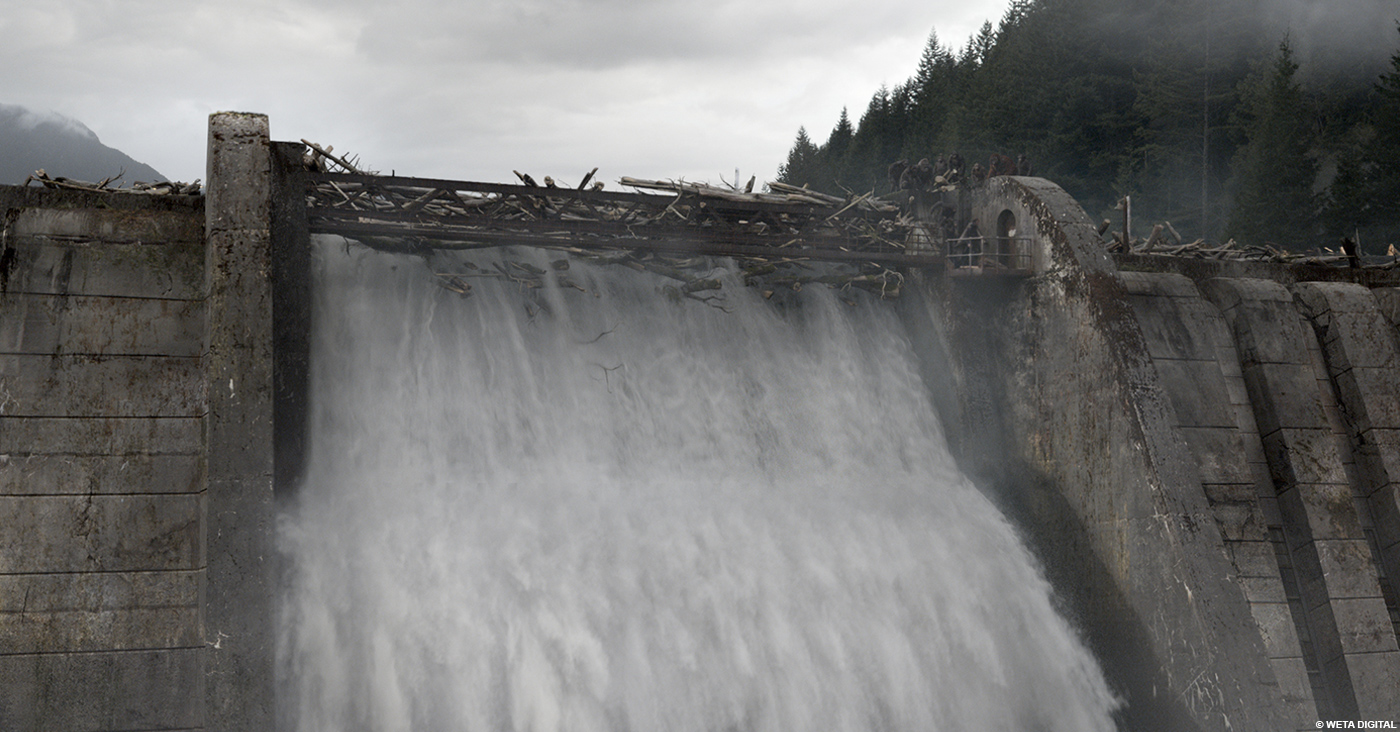Before joining Weta Digital in 2001, Dave Houghton worked at Cinesite in London on films such as TOMORROW NEVER DIES or LARA CROFT: TOMB RAIDER. At Weta Digital, he worked on the LORD OF THE RINGS trilogy, KING KONG, AVATAR or MAN OF STEEL.
What is your background?
I studied fine art and graphic design before graduating with a BA in animation from the West Surrey Institute of Art and Design in the UK. I then worked at Cinesite London when it was owned by Kodak before moving to New Zealand in 2001 to work on the LORD OF THE RINGS films.
What was your feeling to be back with the Caesar team?
To be honest I was pretty excited; the first film was a hell of a lot of fun and I knew this one would be too. I couldn’t wait to get started.
How did you collaborate with Senior VFX Supervisor Joe Letteri and VFX Supervisor Dan Lemmon?
My sequences were under the direct supervision of Keith Miller. He’d catch up with Joe and Dan daily and relay the feedback to the team.
On which sequences have you worked?
Ben Morgan and I supervised the Dam interior, the Tower interior and the Koba Caesar fight sequence at the end of the film.
How did you approach the continuous shot in the corridor sequence?
Shots of this length can be quite daunting until you break them down into more manageable chunks. The shot is actually made out of two different takes that were re-timed to sync up the clips and spliced together with roto shape using one of the interior walls to wipe from one take to another. Once the blend was solved, I split the shot into four main beats where we see the apes. Parts of the environment were cleaned up, then re-projected to help the integration of the apes. Then it was just a matter of grading the apes to fit into the plate adding 2D elements of smoke and dust to match the atmospheric in the original photography and augment the interactions of the CG apes in the shot.
Can you describe one of your days with your team?
A typical day starts off with dailies in the morning where the bulk of the previous day’s work is reviewed. This usually runs for 2-3 hours. In the afternoon, we hold comp rounds where the comp team can come and discuss shots. We make sure that everything is on track aesthetically and try and solve any technical difficulties the team are running into. The evening we spend reviewing shot targets and potential finals, and somewhere in between I find time to comp my own shots.
How did you organize the work amongst your team?
I went over the sequences with production coordinator, Aaron Cowan. Sequences were broken down into groups of shots that were of similar angles and then by difficulty. We’d make sure our junior compositors didn’t get lumbered with tasks that were too difficult and, likewise, that our more experienced artists didn’t get bogged down with too many mundane tasks. It’s efficient to dish out similar shots to one artist, but at the same time, you have to make sure that they are challenged artistically and technically too. To keep the artists motivated we tried to spread the Money Shots as evenly around the team as possible.
Can you explain step by step the compositing of one of your shots?
In general, I start by referencing client previs template and shot notes to make sure I know exactly what the shot requires. I then take a look at the shot plates and make sure the neutral grade and vertical alignment are working as expected and apply any re-times.
After assigning roto and paint tasks, I then collect the onset data, noting lens and aperture parameters so I can set up the correct lens warps and defocus. When the CG is rendered, I run a quick bash comp with raw CG so we can see the lighting is on the right track and check the stereo alignment making sure everything is in the correct space. Once everyone is confident the lighting is accurate, it’s time to integrate it with the photography by adding all the little nuances to the CG – balancing black levels, adding shadows and reflections, applying grain edge treatments, etc.
How did you manage so many elements?
We have some great proprietary tools developed in-house by Johan Aberg and his team that make managing huge amounts of data easier. Integrated into Nuke we have an asset tracker. It allows us to easily pull in and keep up to date CG renders, camera tracks, neutral grades, you name it. If it’s been published for comp, you find it there at your disposal. It will even automatically build a rudimentary comp script of all your renders if you ask it to nicely.
Can you explain in detail about the use of Deep Compositing?
Deep is a standard part of the pipeline at Weta, so all shots get the Deep Comp treatment. But the Tower sequence was a luxury in terms of Deep as it was all CG. We basically had Deep Data for every pixel on the screen. Deep Comp was used to composite the apes, the Tower renders and particle sims. We used the Deep to calculate the defocuses and to help create the fog volumes you see rolling through the shots.
What was your approach with the Tower Fight?
We knew from the beginning that it was going to be a challenge, not just from the compressed schedule, but also because it was the only full CG sequence in the film. It had to match up to the quality and realism of the live action sets which were superb. From the outset our brief was that the sequence was to transition over its duration from pre-dawn to sunrise, so the first task was to work out the timelines and identify key shots in the sequences that would set the look for all the other shots to fall between. Once the key shots had been identified, we set off to collect references. Matt Reeves had already indicated to us scenes from movies he likes, so we honed in our searches for reference around his selections.
In the drive for realism we tried to mimic as many of the existing camera nuances as possible, mining the live action photography from the apes shoot for metadata to help work out the correct aperture and depth of field. Adding the correct amount of blades for the bokeh for each of the lenses and matching the vignetting not only of the image but also of the bokeh itself – all of these details were going to play an important part in making the final shots look as real as possible. To the best of our abilities we wanted to make the full CG shots look and feel as if they were filmed with the Alexa cameras.
Ben Morgan, Steve McGee and I, as well as lighting TDs, explored exposures of the skies and architecture, always using photographic references to guide us, until we arrived at the point where everyone was happy. To keep the look consistent from the outset, we quickly pushed comp templates based around the keystone shots out to the team, and the sequence pretty much evolved from there.
Can you tell us more about the set extensions work?
The Tower sequence called for a variety of set extensions to help make a convincing environment. In the courtyard interior scenes at the base of the Tower there’s a great shot comped by Joerg Baier where the camera tracks the hero characters from the exterior of the building to the interior. The camera then pans up to reveal the scale of the environment. The exterior environment was handled by our matte painters who created a series of magnificent paintings depicting a decrepit and overgrown cityscape, while the interior of the building was live action shot of a bustling human habitat. This was a live action set that was enhanced with CG renders of the Tower interior architecture. Washing lines and cables were strung between the structures, and hanging laundry was simulated drying in the wind. The crowds were made to look fuller by adding in green screen elements and CG rendered people. Smoke and general atmospheric effects were then expertly composited on top.
The subway tunnel sequence also called for a number extensions. Views looking down the length of the track were created entirely in Nuke by Alex Ortoll and James Russell using onset reference photography and geo from the layout department. Photography was projected onto the geo, then cleaned up to create some pretty convincing matte painting projections that effectively extended the tunnels to what would be their natural vanishing points.
Was there a shot or sequence that prevented you from sleep?
The corridor shot had no end of tracking problems caused mainly by a slightly different focal length on one of the lenses in the stereo rig. It went out the door kicking and screaming and gave me a few sleepless nights. And the extremely ambitious Tower sequence handed over late, gave me a mild bout of insomnia, but we got it out the door looking pretty sweet in the end.
What do you keep from this experience?
With good organization and fantastically talented artists who have a willingness to work as a team, there’s really nothing that can not be accomplished.
How long have you worked on this film?
I worked on the film for about six months.
What was the size of your team?
We peaked at 21 compositors. Our team completed 340 shots, a lot of shots for a small team.
What is your next project?
I’ll be working on THE HOBBIT: THE BATTLE OF THE FIVE ARMIES.
What are four movies that gave you passion for cinema?
JASON AND THE ARGONAUTS (1963)
DR. WHO AND THE DALEKS (1965)
ALIEN (1979)
BRAZIL ( 1985)
A big thanks for your time.
// WANT TO KNOW MORE?
– Weta Digital: Official website of Weta Digital.
© Vincent Frei – The Art of VFX – 2014


